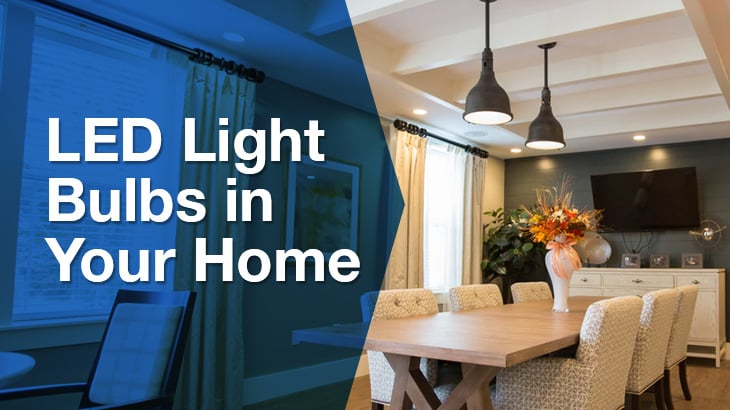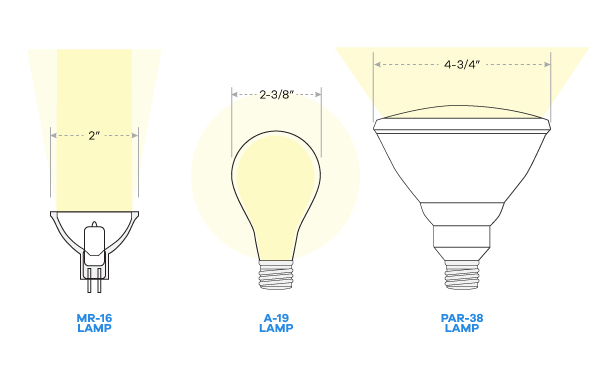How do LED lights work?
If you’re using incandescent bulbs in your home, it might be time to switch to LED (Light-Emitting Diode) bulbs. Here’s why they’re a must-have in your home and office. LEDs are cheaper. They use less energy than incandescent bulbs. And when it comes to emitting light, halogen and compact fluorescent lamps (CFL) can’t hold a […]

If you’re using incandescent bulbs in your home, it might be time to switch to LED (Light-Emitting Diode) bulbs.
Here’s why they’re a must-have in your home and office.
LEDs are cheaper.
They use less energy than incandescent bulbs.
And when it comes to emitting light, halogen and compact fluorescent lamps (CFL) can’t hold a candle to LED.
LEDs burn brighter for longer because they rely on the movement of electrons, unlike their incandescent counterparts.
Incandescent bulbs produce light through heat when an electric current passes through the tungsten filament. The filament can heat up to 4,500°F (2,482°C), which explains why they have a short lifespan.
Cost-effective, durable and zero maintenance – do you see why LED technology continues to grow in popularity? This doesn’t even begin to scratch the surface of why you need to install LED bulbs ASAP.
So these ten reasons should shed some light on these miniature eco-friendly bulbs.
1 – LEDs are Compact in Size

An LED bulb can be as small as 2mm in diameter. This presents unique design opportunities, especially in confined spaces.
These bulbs have a heat sink to discharge heat from the LED into surrounding areas. As a result, LEDs don’t overheat, so that you can use them in temperature-controlled areas of your room.
The heat that incandescent bulbs generate as infrared radiation adds up to ambient temperature and this may lead to fires if the bulb overheats.
2 – LED Light Bulbs Have Zero Toxic Elements
Fluorescent lights contain potentially harmful chemicals such as mercury. Although they can be recycled, most of these bulbs end up in landfills.
In addition, fluorescent bulb disposal has to be done through a registered waste carrier.
If bulb disposal has been a headache for you, why don’t you adopt LED? LED bulbs can be thrown out with your regular trash.
LED bulbs don’t have toxic elements and are less likely to break by accident, making them a better option than other bulbs.
3 – LEDs Come in a Wide Range of Colours
LEDs present various colour options, so you don’t need to stick to one throughout your home. You can get a bulb that mimics natural light for your living room or choose a white LED light for your study area.
And if you want to tone things down for ambience, pick a cooler LED. To highlight key areas in your room, arrange small LED lights to create a spotlight effect.
4 – LEDs Have a Longer Lifespan
An LED light bulb has a lifespan of 60,000 to 100,000 hours. This makes it a better choice than an incandescent bulb, which lasts for about 1,500 hours.
LED light bulbs will last up to 10 times longer than compact fluorescent or halogen light bulbs.
While the initial cost is higher, you can expect your LED lights to last up to:
- 6 years if left on 24 hours a day
- 17 years if used for 8 hours a day
- 34 years if used for 4 hours a day
 Kickstart your next electrical project by getting fast, competitive quotes.
Kickstart your next electrical project by getting fast, competitive quotes.

5 – LEDs Produce Less Heat
Fact: An LED produces 15% visible light and 85% heat while an incandescent bulb produces 83% infrared heat, 12% heat and only 5% visible light.
LEDs emit very little heat and are cool to the touch. This is because they don’t produce heat in the form of infrared radiation.
Low heat emissions give LEDs their long lifespans, which makes them perfect for hard-to-reach areas like cathedral ceilings and delicate chandeliers that aren’t replaced regularly.
Replacing incandescent bulbs with energy-efficient bulbs reduces carbon dioxide emissions significantly.
6 – LEDs Provide Instant Light
The moment you switch on an LED light, it reaches full intensity. Moreover, its lifespan will not be reduced if you frequently switch it on and off.
LED lights have more effective light distribution, as they focus light in one direction. So you get to use fewer bulbs compared to someone using incandescent lights.
That’s great news to your pocket because with reduced energy consumption comes a lower electricity bill.
7 – LEDs Work in Harsh Environments
If you live in challenging conditions, switch to LEDs as they’re waterproof, wind, shock, and vibration resistant.
They can withstand extreme temperatures and can even be installed in ice skating rinks.
8 – LEDs Reduce Noise Pollution
Unlike other lighting technologies, LED lights do not generate vibration or humming noises.
They help you keep those annoying insects at bay because they don’t generate heat. This makes them ideal for outdoor lighting.
9 – LED Light Bulbs Are Energy-Efficient
Fact: LED lights use 75% less energy than halogen light bulbs.
This is different from incandescent and halogen lights, which get very hot and consequently increases energy consumption by 80%.
LED lights enable you to save on air conditioning costs, as they don’t raise the temperature of the room.
Since they use little energy, LEDs are ideal for solar powered outdoor lighting. The sun’s energy can provide all the power your outdoor LED lights need to operate at night.
And if you have solar panels, LEDs won’t drain your stored battery at night.
10 – How Can I Install LED Light Bulbs?
Here are some factors you need to consider when choosing LED bulbs:
- Colour: What colours do I want to be reflected in my house? Warm white, cool white, or daylight?
- Bulb type: What lights appeal to my taste – downlight, floodlight or spotlight?
You can get expert advice from licensed electricians on Service Seeking. - Light output and brightness: LED light output and brightness is measured in lumens. If you want to get the same effect as you did from your halogen bulb, you can get an LED bulb with a matching lumen value.
- Dimmers: LEDs consume little energy, so you’ll have to change to low voltage dimmers. If you don’t your new LEDs will flicker and have irregular dimming levels. Your LED driver, bulb and circuit may also get damaged.
A qualified electrician will charge you $50 to $80 per hour. There are over 13,000 licensed electricians waiting to help you make the change.
And you can request for as many quotes as you need to make an informed choice. So join other happy customers who have reported saving up to 40% on electrical work.